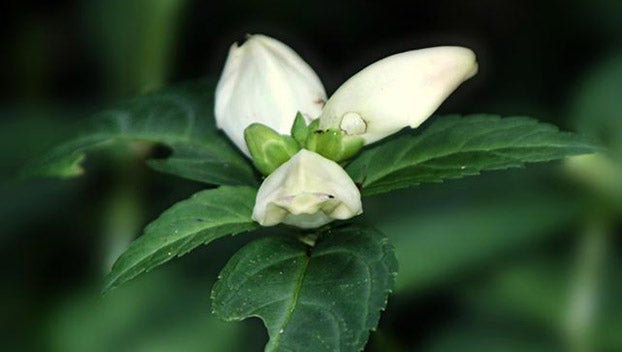Mother Natures Garden — Turtleheads: Flowers with an interesting shape
Published 6:28 pm Friday, October 14, 2022

- White turtlehead flowers resemble turtles peeking from their shells.
|
Getting your Trinity Audio player ready...
|
Even though the days are still warm, there’s a chill in the early morning and late afternoon air. Autumn is here, so it’s time to search for white turtleheads (Chelone glabra in the Plantain Family) and reflect on how this plant with the unusual bloom got its name. A morality tale. According to ancient lore, the nymph Chelone angered the gods by not attending the wedding of Zeus and Hera. In retaliation, Zeus pushed Chelone’s house over onto her head and turned her into a turtle, an animal forced to carry its house on its back and to remain silent. Don’t like the common name turtlehead? This plant is also known as snake head, snake mouth, and fish mouth. It’s all about that protruding head.
I was lucky to find a boggy ditch full of white turtleheads recently. They’re stiffly erect plants with generally square, sometimes terete, stems that grow 2 to 3 feet tall. The leaves are opposite, but each pair rotates 90 degrees from the one below.
Turtleheads have white to pinkish, hooded snapdragon-like flowers arranged in terminal racemes. If you look closely, you can see how each bloom resembles a turtle’s shell with a tiny head peeking out from it. The flowers open from the bottom to the top of the raceme and are protandrous, meaning the male reproductive parts of the flowers mature before the female parts, thus ensuring that the flowers don’t self-pollinate. Because the flowers are difficult to enter, bumblebees are the primary pollinators of turtleheads, and occasionally you’ll find a bloom with a hole in the side where an impatient bumblebee has chewed its way out.
There are six species of turtleheads found in North America; three are found in Virginia. The white turtlehead is the most common. C Cuthbertii has violet-purple blooms and is found in only two disjunct populations. It’s ranked S2, imperiled. C obliqua, the red turtlehead, is rare in the south and central Coastal Plain, north to Richmond County. It’s ranked S1, critically imperiled.
Turtleheads are found in wet areas, such as seeps, seepage swamps, floodplain forests, and ditches, where they often form colonies. This plant has a long history of use in traditional medicine to treat fevers, stimulate appetite, and eliminate intestinal parasites.
Dr. Cynthia Wood is a master gardener who writes two columns for The Herald. Her email address is cynthia.crewe23930@gmail.com.




